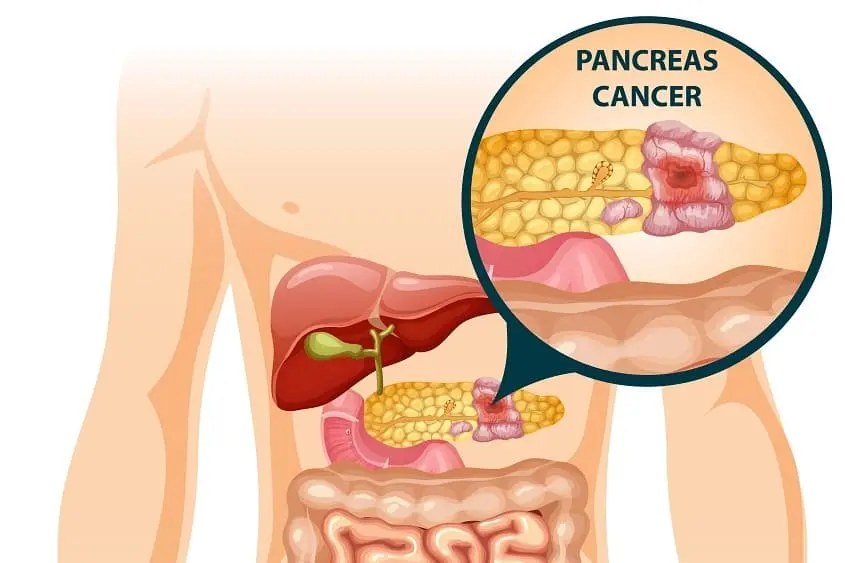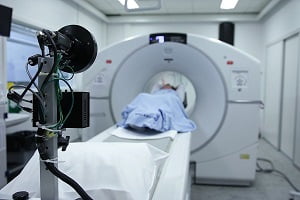Borderline Resectable Pancreatic Cancer
- Updated on: Feb 5, 2020
- 3 min Read
- Published on Feb 5, 2020

Pancreas is an organ located behind the stomach which helps in the digestion of food. Pancreatic cancer occurs due to uncontrolled division of abnormal cells present in the pancreas. These uncontrollably dividing cells form abnormal masses or tumors instead of growing into healthy tissue.
Pancreatic tumors may spread to other body parts and result in various signs and symptoms.
What is Borderline Resectable Pancreatic Cancer?
Pancreatic cancer has been declared as the fourth leading cause of cancer death in the United States. While surgical resection is one of the main treatment options for pancreatic cancer, 80% of patients still present with an unresectable forms of the disease.
Pancreatic cancer can be categorized into two forms based upon the stage of the disease progression and the treatment options:
(a) Resectable pancreatic cancer
(b) Unresectable pancreatic cancer
Resectable pancreatic cancers are confined within the pancreas and surrounding area and do not spread to nearby blood vessels and therefore can be removed with the help of a surgery. Unresectable pancreatic cancers are difficult to remove by surgery as they spread to nearby blood vessels.
Besides these two forms of pancreatic cancer, there is another form called borderline resectable pancreatic cancer. Borderline resectable pancreatic cancer is an intermediate type – between resectable and unresectable pancreatic cancers.
Borderline pancreatic cancers are not confined within the pancreas and have extended towards the nearby blood vessels but are still believed to be surgically removable. Patients with borderline pancreatic cancer are at a high risk of positive surgical margins (cancer has not been completely removed) because cancer has already spread to the nearby blood vessels. This suggests that borderline pancreatic cancers are neither completely resectable nor unresectable.
Important Points Related to Borderline Resectable Pancreatic Cancers
- Multidisciplinary management is essential for borderline resectable pancreatic cancer.
- Resection of borderline resectable pancreatic cancer is safe when performed under the guidance of senior experienced surgeons
- Approximately 65% of patients with borderline pancreatic cancer undergo resection (rate of resection)
- Surgical removal of borderline resectable pancreatic cancer may improve the overall survival of patients
- The most important cause of unresectability in borderline resectable pancreatic cancer is the disease progression while receiving chemotherapy
More: Early Detection and Screening of Pancreatic Cancers
More: Why Do Many Cancer Patients Vomit Blood?
Signs and Symptoms of Borderline Resectable Pancreatic Cancer
Borderline pancreatic cancers are not confined to pancreas and surrounding areas only but they can extend towards the nearby vasculature also which makes them partially resectable. Following are some of the signs and symptoms of borderline resectable pancreatic cancers:
- Pain in the stomach and upper portion of the back
- Blood clot formation
- Nausea and vomiting
- Diabetes
- Jaundice
- Loss of appetite
- Sudden weight loss
- Fatigue
- Changes in the color of stool
Treatment Options
Following are some treatment options available to patients with borderline resectable pancreatic cancers:
Chemotherapy
Chemotherapy is the first treatment given to patients with borderline resectable pancreatic cancers. Chemotherapy usually helps in reducing the size of the tumor and is given to patients before starting any other treatment. Chemotherapy may be given alone or along with chemoradiation.
Chemotherapy drugs include gemcitabine nab-paclitaxel (Abraxane), FOLFIRINOX – folinic acid (leucovorin), 5-fluorouracil (Adrucil, 5-FU), irinotecan (Camptosar) and oxaliplatin (Eloxatin).
Radiation Therapy
Radiation therapy or chemoradiation is given along with chemotherapy. Chemoradiation is given to the patients only if they respond to chemotherapy. However, if the tumor progresses even after chemotherapy treatment, chemoradiation is not given because it is unlikely that it will reduce the tumor size.
Such tumors that show progression during chemotherapy are called locally advanced tumors.
Surgery
Surgical removal of tumors is done only if patients have responded to chemoradiation therapy. The type of surgical procedure to be performed depends on the size and location of the tumor.
Following are some of the surgical procedures available for borderline resectable pancreatic cancers:
- The Whipple procedure or pancreaticoduodenectomy
- The modified Whipple procedure or pylorus-preserving pancreaticoduodenectomy
- Distal pancreatectomy
- Total pancreatectomy
Role of Neoadjuvant Therapy in Borderline Resectable Pancreatic Cancers
Neoadjuvant therapy is the treatment given to patients before surgery and mainly includes chemotherapy, radiation therapy, and hormone therapy.
Neoadjuvant therapy shrinks the size of the tumor so that it can be easily removed with surgery. There are many theoretical benefits of neoadjuvant therapy in borderline resectable pancreatic cancer.
It helps in the sterilization of margins before surgery which in turn increases the chances of R0 resection (no cancer cells are left at the site of the tumor) of the tumor. It is very helpful in treating the extremely small metastases that are difficult to be detected by preoperative imaging.
Patients with borderline resectable disease often suffer from many complications post-surgery that may interfere with adjuvant therapy or other additional treatments. In that case, the neoadjuvant therapy approach ensures that patients receive the benefits of multimodality therapy.











